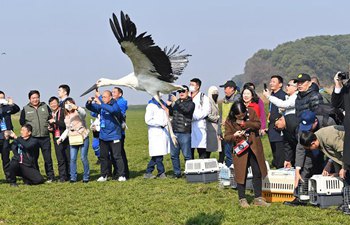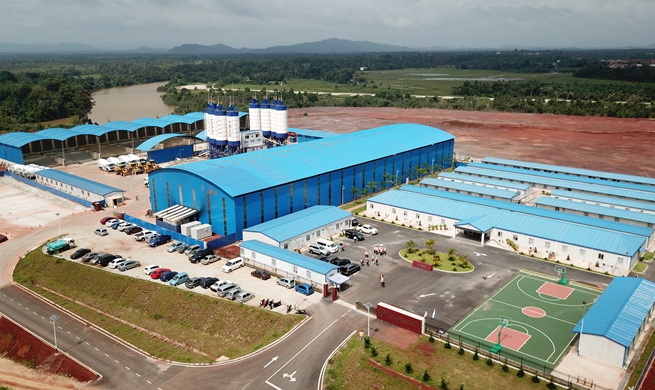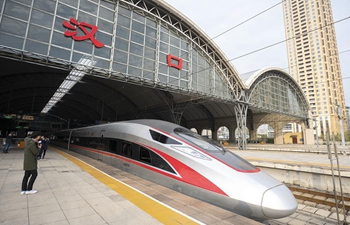BEIJING, Dec. 9 (Xinhua) -- Year-on-year drops of China's foreign trade halted in November in the latest sign of economic resilience.
Despite external uncertainties and domestic downward economic pressure, trade volume expanded 1.8 percent year on year last month in Chinese yuan terms, the General Administration of Customs said Sunday.
Exports increased 1.3 percent over a year ago in November, while imports gained 2.5 percent, ending year-on-year drops in the previous two months.
The country's private players, the trade sector's mainstay, managed to achieve a 10.4-percent year-on-year growth in trade volume in the first 11 months of this year, by such means as diversifying their trading markets and adjusting trade mix.
Trade with Belt and Road countries rose 9.9 percent from January to November, accounting for nearly 30 percent of the total trade.
Exports of machinery and electronic products grew 4 percent, while automobile exports expanded 5 percent.
"China has achieved better-than-expected trade growth against downward pressure so far," said Li Xingqian, director of the Ministry of Commerce's foreign trade department. Li expected China's total trade volume to be around 30 trillion yuan (about 4.26 trillion U.S. dollars) for the whole year.
China has confidence it will maintain steady trade growth with improving quality in 2020 despite sluggish global demand, Li said, citing the country's solid trade foundation and vitality of market players.
A recent private survey by financial firm HSBC and research consultancy Kantar showed that Chinese firms are moving fast to brave protectionism pressure.
While foreign companies are prioritizing cost reductions to mitigate the risk of trade tensions, Chinese firms are pursuing a different strategy. Over a third are changing their offerings in key trading markets by entering into joint ventures with local companies or digitizing their sales platforms, the survey showed.
Businesses in China are also prioritizing trade with regional partners, the survey said. Over half of Chinese firms identify the Asia Pacific as a top region for expansion in the next three to five years.
China will take a string of innovative and reform steps to seek high-quality trade growth, aiming to further optimize trade mix, boost efficiency and competitiveness and develop a sound evaluation mechanism by 2022, according to an official guideline.
Among others, the country will lift the trade share with its free trade partners, emerging markets and developing countries in its total trade, further reduce tariffs and institutional costs, boost service trade and promote cross-border e-commerce.

















